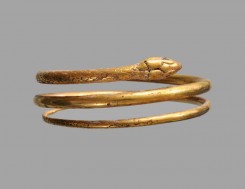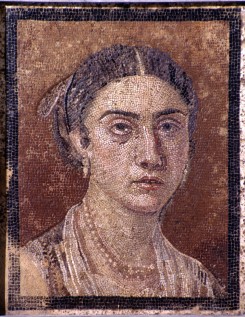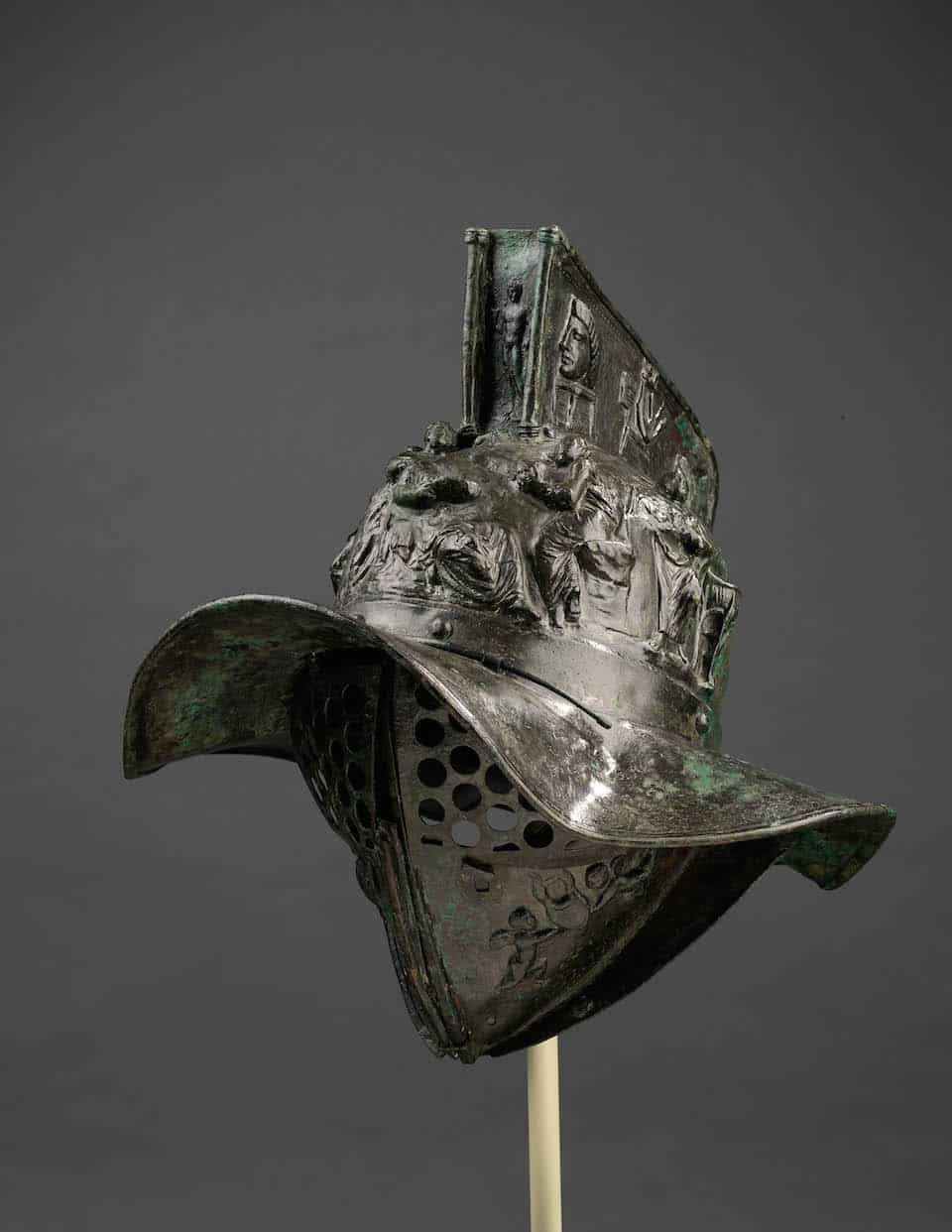
Courtesy of The Superintendence for the Archaeological Heritage of Naples (SAHN) and the Royal Ontario Museum.
When we think of ‘Pompeii,’ we often associate the small Roman town with the destruction caused by the eruption of Mount Vesuvius in 79 AD. The disaster resulted in the notorious plaster casts of suffocating human bodies, only to be retrieved by archaeologists long after the volcano had settled.
While the Royal Ontario Museum’s new exhibition, Pompeii: in the Shadow of the Volcano, does reference the death and destruction that befell the city of Pompeii, the exhibition’s principle focus is on the artifacts that were used in daily life within the Roman town, prior to the eruption. Over 200 archaeological findings make up the ROM’s Pompeii exhibition. The artifacts — including mosaic, glass, bronze, marble, and fresco — are divided into two main sections of the exhibition: public life and private life.
The first section, public life, contains objects that showcase political life and entertainment, displaying objects such as bronze gladiator armour and fragmented musical instruments. This section’s most significant aspect is its focus on the “Cult of Isis,” which can be found in the subsection on religion. The Cult of Isis, founded in Egypt and centered on a Roman goddess named Isis, was one of the most popular religious groups in the larger Roman world due in part to its promise of salvation in the afterlife. The choice to focus on this cult came as a pleasant surprise, considering likely pressure from the public to view artifacts displaying more of the popular gods and goddesses from Ancient Rome’s religion, such as Venus or Apollo.
The exhibit’s division of public life and private life is successful not only in its organization of various artifacts, but also as a vivid presentation of daily life as an elite citizen in Pompeii; the second section, private life, consists of a wide range of artifacts that were retrieved from the villas of Pompeii’s wealthier citizens. That being said, the private life section only contains artifacts that belonged to the very wealthy, rather than the average Pompeian. While it was interesting to see how Pompeii’s aristocrats went about their daily life, the exhibition, in this sense, failed to reflect the private reality of the majority of the city’s inhabitants.

Courtesy of The Superintendence for the Archaeological Heritage of Naples (SAHN) and the Royal Ontario Museum.
At times, the exhibition came across as disorienting, primarily as a result of its inability to signal the introduction of new subsections. It took a couple walkthroughs of the exhibition to properly identify when a subsection began, since no disruptions exist between artifacts that belong to separate areas.
Despite these occasional road bumps, Pompeii: in the Shadow of the Volcano had plenty of redeeming qualities. It consistently reminded the viewer of the disaster’s apocalyptic impact, while simultaneously, encouraging the viewer to imagine the life of those who inhabited the ancient Roman city prior to its destruction. The exhibit is refreshing in its use of artifacts to represent daily life, and provides the viewer with a sense of Pompeii’s peaceful disposition before it met with an unexpected ending.
Pompeii: in the Shadow of the Volcano, is at the Royal Ontario Museum until January 3, 2016 .


